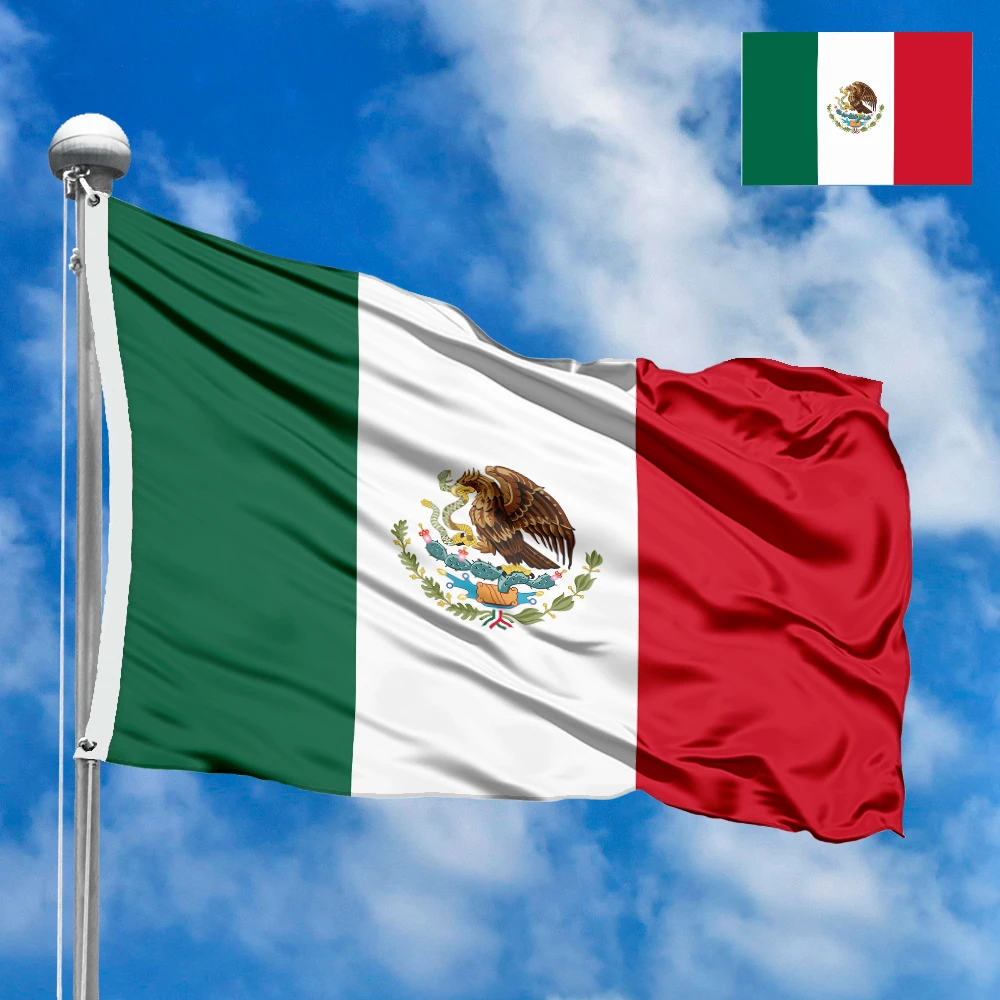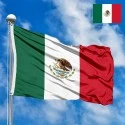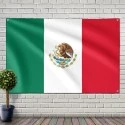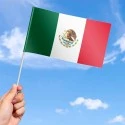The national flag of Mexico is a powerful and iconic symbol, deeply embedded in the nation's history, culture, and identity. Its design is a vibrant triptych of color and an intricate emblem that tells a foundational story of the Mexican people. Far more than just a piece of cloth, the flag is a living representation of sovereignty, independence, and the enduring spirit of a country forged through centuries of struggle and triumph.
A Detailed Look at the Flag's Design and Symbolism
The flag of Mexico is a vertical tricolor, consisting of three equally sized stripes. From hoist to fly (left to right), the colors are green, white, and red. At the very center of the white stripe, the national coat of arms is prominently displayed. This particular combination of colors and the coat of arms create a visually stunning and symbolically rich banner.
Each element of the flag is imbued with profound meaning, reflecting key aspects of Mexican history and culture:
-
Green: The green stripe represents hope, independence, and the lush land of Mexico. Historically, it symbolized the nation's quest for liberation from Spanish rule. Today, it is also seen as a symbol of the nation’s natural resources and the vibrant ecosystem of its diverse regions.
-
White: The white stripe, located in the center, stands for unity, purity, and the purity of the Catholic faith. In the context of the Mexican War of Independence, it represented the purity of the cause and the unity of the different factions fighting for freedom.
-
Red: The red stripe symbolizes the blood shed by national heroes who fought for the country's independence. It is a tribute to the courage, valor, and sacrifice of those who gave their lives to build the Mexican Republic. It represents the nation's passion and the fighting spirit of its people.
The Intricate Coat of Arms
The national coat of arms is the most complex and historically significant part of the flag. Its design is based on an ancient Aztec legend about the founding of their capital city, Tenochtitlan (modern-day Mexico City).
-
The Golden Eagle: At the center of the emblem is a powerful golden eagle, perched on a prickly pear cactus. The eagle symbolizes the Mexican people's strength and freedom. Its readiness to defend its home embodies the nation's sovereignty.
-
The Serpent: The eagle is shown devouring a serpent, which is a powerful image of the struggle between good and evil. This is the central tenet of the Aztec legend, where the god Huitzilopochtli told the nomadic Mexica people to build their city on the spot where they saw an eagle devouring a serpent. This legend forms the very foundation of Mexico's identity.
-
The Nopal Cactus: The eagle is perched on a nopal cactus, a plant native to Mexico. The cactus symbolizes the heart of Mexico, its resilience, and its unique natural landscape. It is also a reminder of the nation’s ancient roots and the indigenous cultures that shaped its identity.
-
The Lake and Rocks: The eagle and cactus are situated on a small rock rising from a lake, representing the Valley of Mexico where Tenochtitlan was founded. This imagery anchors the flag in a specific historical and geographical context.
-
The Laurel and Oak Wreaths: Below the scene, a wreath of laurel and oak branches is tied with a ribbon of the national colors. The laurel represents victory and success, while the oak symbolizes strength and enduring power. Together, they signify the victory of the Mexican people in achieving their independence and the strength of the nation.
Dimensions and Proportions
The official flag of Mexico has a width-to-length ratio of 4:7. The three vertical stripes are of equal width. A key distinction of the Mexican flag from other similar tricolors (like the flag of Italy) is the presence of its unique and detailed coat of arms, which is officially centered on the white stripe. The design of the coat of arms itself is governed by strict regulations to ensure it is reproduced accurately and respectfully.
The Genesis and Evolution of the Flag
The current Mexican flag is the result of a long and fascinating evolution. The green, white, and red colors were first adopted in 1821 by the Army of the Three Guarantees, led by Agustín de Iturbide, which fought for Mexico's independence. The original meaning of the colors was: green for independence, white for the unity of religion, and red for the union of the Americas. Over time, the symbolism of the colors shifted to reflect the modern values of hope, unity, and the blood of heroes.
The coat of arms has also undergone several revisions throughout history, with different emperors and presidents modifying its design. The current version of the coat of arms was officially decreed in 1968 and confirmed by a law passed on February 24, 1984. This version is a direct homage to the country’s Aztec heritage and serves as a constant reminder of its deep cultural roots.
Meaning and Significance for Citizens
For the people of Mexico, the flag is a sacred emblem of national identity and pride. It is a symbol of their rich history, their resilience in the face of adversity, and their shared future. The flag is proudly displayed throughout the country, especially during national celebrations like Independence Day on September 16th and Flag Day on February 24th.
The legend of the eagle and serpent is a fundamental part of the national consciousness, taught to children from a young age. It connects modern Mexico directly to its pre-Hispanic past, creating a sense of continuity and a strong foundation for national identity. For Mexicans living abroad, the flag is a powerful and emotional link to their homeland, a rallying point for their communities, and a source of profound pride. It is a symbol of a nation that has overcome great challenges and continues to thrive on the global stage.
Interesting Facts
-
The Mexican flag is sometimes confused with the Italian flag, as both are green, white, and red vertical tricolors. The key differences are the shade of green, the proportions (Italy’s is 2:3, Mexico’s is 4:7), and, most importantly, the presence of the coat of arms on the Mexican flag.
-
The national anthem, "Himno Nacional Mexicano," makes several references to the flag and its symbolism, further cementing its importance in the national psyche.
-
The flag is so revered that there are strict laws governing its use and reproduction. Any disrespectful use of the flag is subject to legal penalties.
-
The day after Independence Day, September 17th, is also a day of remembrance for all national heroes who died in the fight for independence, and the flag is lowered to half-mast in their honor.
-
The detailed design of the coat of arms on the flag is a point of national pride. The official design of the eagle, with its wings spread in a "combat stance," is a recent addition, representing the nation's readiness to defend its sovereignty.
In conclusion, the flag of Mexico is a complex and beautiful tapestry of history, mythology, and national pride. Its colors and intricate coat of arms tell the story of a nation’s birth, its enduring values, and its unique place in the world. It is a powerful symbol that continues to inspire and unite the Mexican people.
In the demonstration images, full-size flags are shown with proportions of 2:3, and hand-held flags with proportions of 1:2.







 Waving flag
Waving flag
 Sizes:
Sizes:
 Round flag
Round flag
 Sizes:
Sizes:
 Rectangular flag 2:3
Rectangular flag 2:3
 Sizes:
Sizes: